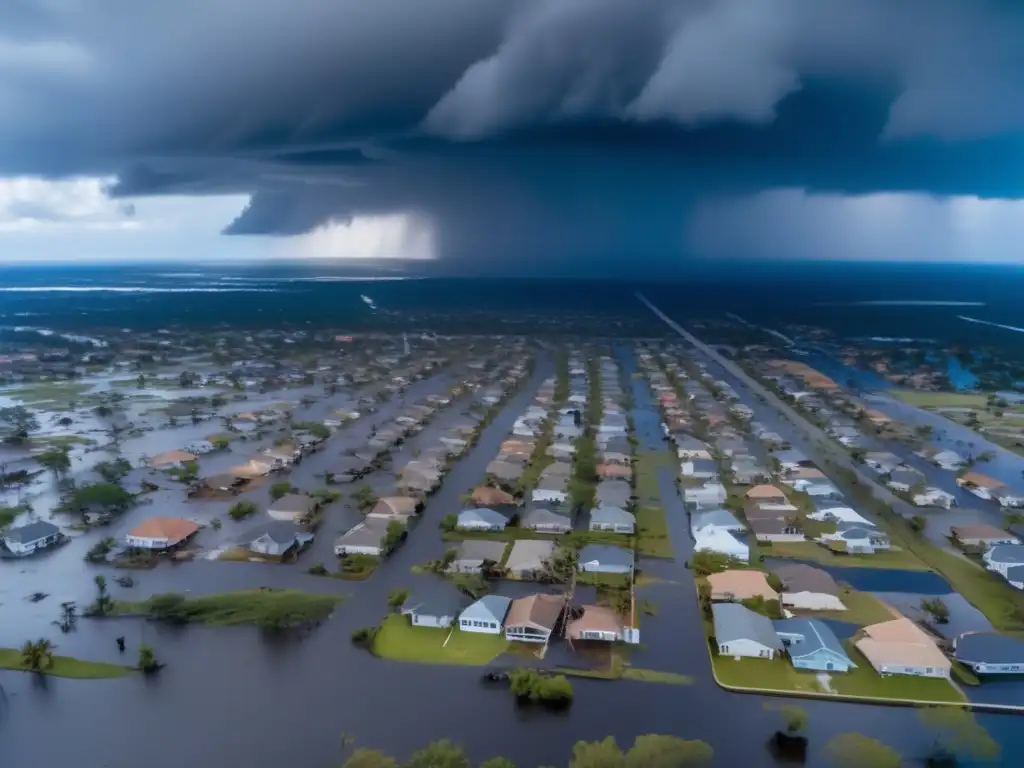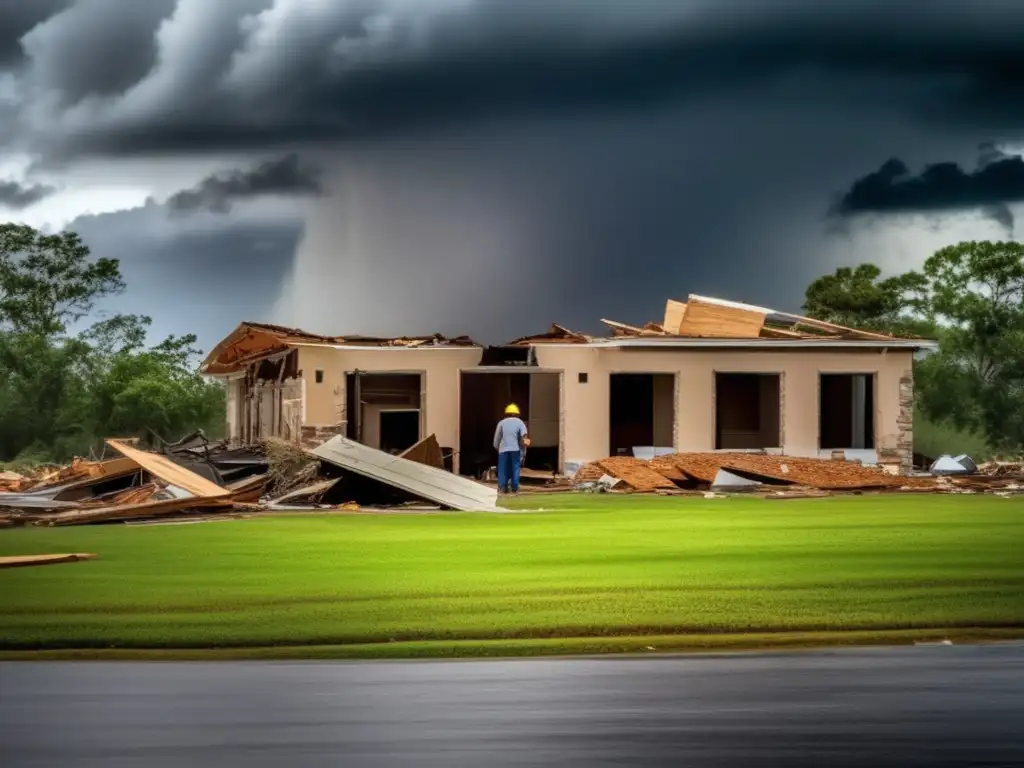Creating A Long-Term Recovery Plan After A Hurricane

Creating a Long-Term Recovery Plan After a Hurricane
Introduction
Every year, hurricanes devastate communities, causing significant property damage and loss of life. After the storm passes, individuals and families are left to pick up the pieces and rebuild their homes and lives. Creating a long-term recovery plan is crucial for those affected by hurricanes, as it can provide a path forward towards recovery and help mitigate damage in future storms.
The Immediate Aftermath

Assessing the Damage
The hours following a hurricane can be chaotic, but it is essential to assess the damage as soon as possible. This includes checking for structural damage, flooding, power outages, and potential environmental hazards such as downed power lines or gas leaks. Once the damage has been assessed, prioritize repairs and consider hiring professionals to assist in the process.
Contacting Insurance Providers
After assessing the damage, contact your insurance provider to report any losses. Take photos of damaged property and inventory any destroyed items. Familiarize yourself with the terms of your policy and the claims process, as it can be lengthy and complicated. Stay in regular contact with your provider throughout the entire process.
Keeping Records
Maintaining accurate records of all transactions and interactions with insurance providers, repair services, and government agencies is critical for your recovery plan. Keep receipts, contracts, and agreements safe, so they are easily accessible if needed. This documentation is vital in ensuring that you receive the maximum coverage provided by your insurance policy.
Short-Term Recovery

Making Repairs
Once the initial damage assessment has been concluded, it's crucial to begin repairs as soon as possible. Focus on fixing the most critical issues, such as blown-out windows or damaged roofs, before moving on to less pressing items. If you are unsure how to make repairs, consider contacting a professional contractor or repair service.
Temporary Housing
If your home is uninhabitable after a hurricane, finding temporary housing is a crucial step in your recovery plan. Friends and family may be able to offer spare rooms or other accommodations during the rebuilding process. Alternatively, local governments may provide emergency shelter assistance. Check with your insurance provider to see if temporary housing coverage is included in your policy.
Gathering Resources
Depending on the severity of the storm, it may take some time for power and other utilities to be restored. Stock up on non-perishable food, water, and other necessary supplies in case of extended outages. Keep important documents, like passports and birth certificates, safe and secure. Consider purchasing a generator or other emergency power source to ensure access to electricity in case of an extended outage.
Long-Term Recovery

Developing a Plan
Rebuilding your life and home after a hurricane can be a long and arduous process. Developing a long-term recovery plan can help ensure that progress is made safely and efficiently. Focus on prioritizing the most critical repairs and establishing a timeline for rebuilding. Determine if professionals are needed for certain projects and budget accordingly.
Complying with Regulations and Building Codes
When rebuilding a home after a hurricane, it's essential to comply with regulations and building codes. Failure to do so can result in fines and further damage from future storms. Hire licensed contractors and obtain the necessary permits for any repairs or reconstructions. It's also important to ensure your new construction is up to current building codes to ensure maximum safety and future resilience.
Seeking Financial Assistance
Rebuilding after a hurricane can be expensive, and many individuals and families may require financial assistance. Check with local, state, and federal agencies to see if any aid programs are available. Charities and foundations may also be able to assist, particularly for those without insurance or the means to pay for repairs.
Frequently Asked Questions

-
What should I do if my insurance provider denies my claim?
If your insurance provider denies your claim, review your policy and confirm that they have correctly interpreted its terms. If you still believe that your claim was unfairly denied, contact your state insurance regulator for assistance.
-
How can I find qualified contractors for repairs?
Ask for referrals from friends and family or check with professional organizations. Interview multiple candidates and ask for references before hiring. Additionally, check with your state licensing board to ensure the contractor is properly licensed and insured.
-
What should I do if my home was damaged in a flood?
Contact your insurance provider immediately to file a claim. Seek professional assistance for repairs and consider applying for federal aid, such as FEMA grants. Ensure that all repairs meet necessary flood-resistant standards to prevent future damage.
-
How can I ensure that my rebuilt home is resilient to future hurricanes?
Focus on complying with current building codes and regulations. Install hurricane-resistant windows and doors, and ensure that roofing materials are up to code. Consider elevating your home or building a storm-resistant shelter if you live in a particularly vulnerable area.
-
How can I prepare for future hurricanes?
Develop an emergency supply kit and establish a family communication plan. Consider purchasing flood or hurricane insurance if not already covered. Stay informed about potential storms and evacuation orders and follow guidance from local authorities.
Conclusion
Creating a long-term recovery plan after a hurricane is critical to ensure a safe and efficient return to everyday life. By assessing immediate damage, making short-term repairs, and developing a comprehensive plan for long-term recovery, individuals and families can mitigate future damage from future storms. Remember to comply with building codes and regulations and seek financial assistance when necessary. Finally, prioritize safety, stay informed, and prepare for future hurricanes to reduce the risk of damage and loss in the future.
The team at HurricaneInsider.org is committed to providing comprehensive information on hurricanes and supporting those affected by these powerful storms. We encourage our readers to engage with our materials, share their thoughts in the comments section, and connect with us on social media for the latest updates on hurricane preparedness and recovery. Thank you for reading and taking steps towards a safe and resilient future.
Additional Resources

- Ready.Gov - Hurricanes
- FloodSmart.gov
- Federal Emergency Management Agency - Hurricane Laura
- National Hurricane Center
 Resources For Mental Health Support Following A Hurricane
Resources For Mental Health Support Following A Hurricane The Role Of Charities In Hurricane Recovery Efforts
The Role Of Charities In Hurricane Recovery Efforts Navigating FEMA Assistance After A Hurricane
Navigating FEMA Assistance After A HurricaneIf you want to discover more articles similar to Creating A Long-Term Recovery Plan After A Hurricane, you can visit the Hurricane recovery: category.
Leave a Reply

Articulos relacionados: